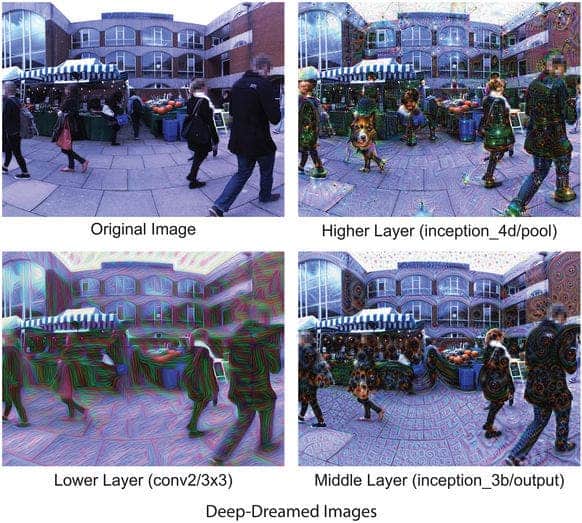British researchers have devised a wall-melting machine capable of inducing hallucinations. There are no drugs involved but participants reported visual hallucinations akin to those induced by LSD or psilocybin (magic mushrooms).

The experimental setup consists of a virtual reality platform into which scientists plugged in Google’s creepy DeepDream — a neural network mainly designed to identify features in images but which also, as a by-product, does the equivalent of ‘dreaming’ for robots.
Researchers at Sussex University’s Sackler Centre for Consciousness Science in the UK asked the 12 volunteers to strap on the virtual reality headset into which panoramic natural landscapes were streamed. At one point, the scientists hit the switch for DeepDream which produced “biologically realistic visual hallucinations.”
After the mind-bending experience, each participant had to fill out a questionnaire describing the whole thing. They were asked questions like whether they felt a loss of control or a loss of their sense of self, and whether they saw patterns and colors. This is how the team found that the induced hallucinations were very much similar to those caused by psilocybin, the active ingredient in ‘magic mushrooms’.
The purpose of this experiment isn’t to trip people out of their minds. What the researchers were going for is isolating the visual effects of hallucinogens sans the chemical alteration of the brain. Because Google DeepDream is basically a pattern interpreter on steroids, the resulting imagery is on overdrive — so much so that the machine starts to ‘imagine’ things that shouldn’t really be there in the first place.
“Unravelling the brain basis of unusual perceptual experiences, like hallucinations, is important both for understanding how normal everyday conscious perception works, and it also sheds new light onto how changes in visual processing in the brain lead to specific kinds of hallucinatory experience,” said Anil Seth, one of the lead researchers on the study published in the journal Scientific Reports.
In a second experiment, 22 participants were questioned about whether they felt any sense of temporal distortion or warped sense of time, another hallmark of hallucinogens. Their responses matched those recorded after watching control videos though. This suggests that the machine can replicate some but not all the effects of psychedelic drugs.
“Overall, the Hallucination Machine provides a powerful new tool to complement the resurgence of research into altered states of consciousness,” conclude the researchers.


